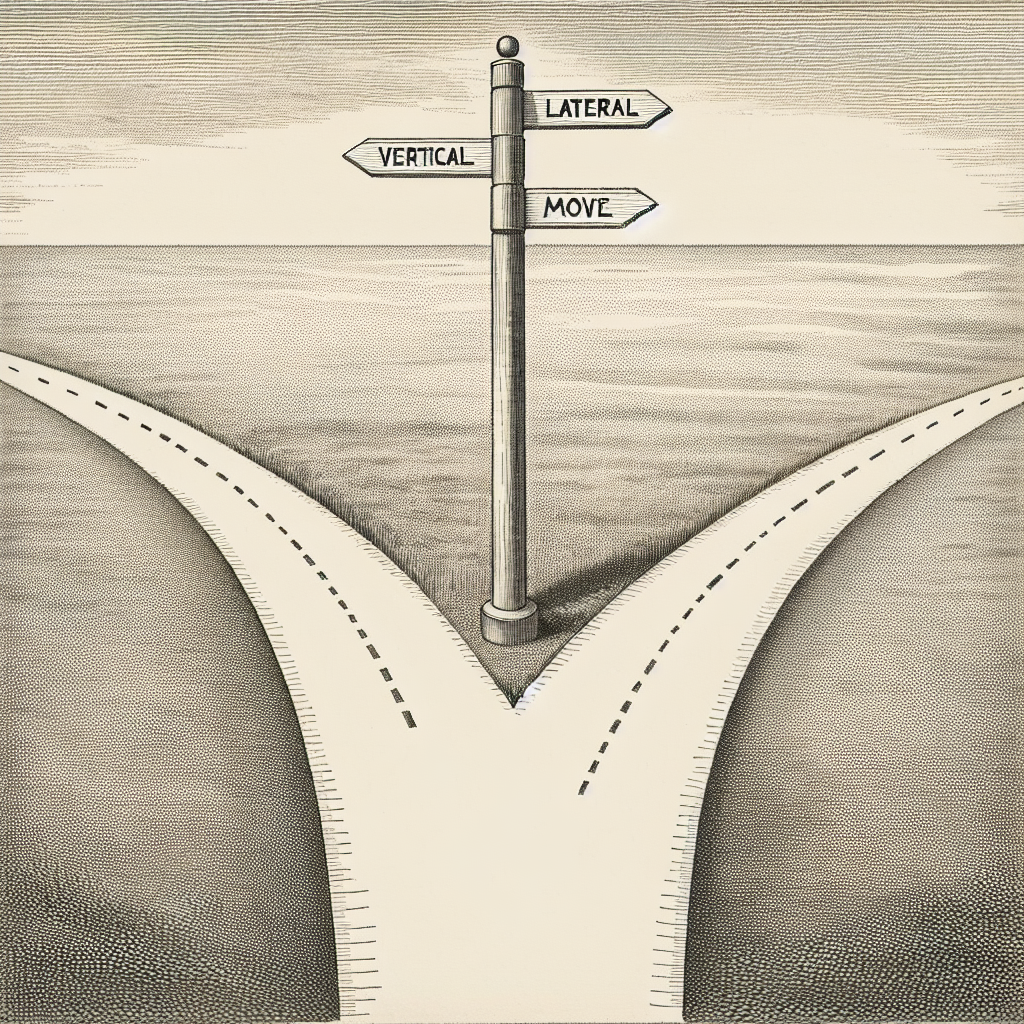
Why Lateral Career Moves Are the New Path to Success
# Why Lateral Career Moves Are the New Path to Success
In a rapidly evolving business landscape, the traditional view of career progression as a linear climb up the corporate ladder is being redefined. Enter the concept of lateral career moves—transitions that involve shifting roles or departments at the same organizational level. This paradigm shift is not merely a trendy buzzword; it represents a strategic approach to career development that can yield significant benefits. In this article, we delve into why lateral career moves are gaining traction as the new path to success and how emerging leaders can harness this strategy for their professional growth.
Understanding the Lateral Career Move
A lateral career move, often misconceived as a mere change of scenery, is a strategic maneuver that can enhance one’s skill set, broaden industry knowledge, and build a robust professional network. Unlike vertical moves that focus on ascending the corporate hierarchy, lateral moves emphasize breadth of experience over depth. This approach not only diversifies one’s expertise but also positions individuals to be more versatile and adaptable in an ever-changing job market.
The Strategic Value of Lateral Moves
Broadening Skill Sets and Expertise
One of the most compelling reasons to consider a lateral career move is the opportunity to acquire new skills and knowledge. By transitioning into different roles or departments, professionals can gain a comprehensive understanding of various business functions. This holistic insight is invaluable for emerging leaders aspiring to executive mastery, as it equips them with the versatility needed to navigate complex organizational dynamics.
For instance, a marketing manager who moves laterally into a sales role can develop a deeper appreciation for customer relationships and revenue generation. This broadened perspective not only enhances their competency but also makes them more effective leaders who can bridge gaps between departments.
Enhancing Problem-Solving Abilities
Lateral career moves often place individuals in unfamiliar environments where they must adapt to new challenges and problem-solving scenarios. This experience fosters critical thinking and innovation, as professionals are compelled to devise creative solutions to novel problems. By stepping out of their comfort zones, emerging leaders can cultivate a mindset of continuous improvement and resilience—qualities that are essential for executive success.
Expanding Professional Networks
Another significant advantage of lateral moves is the expansion of one’s professional network. Interacting with colleagues from different departments or industries provides access to diverse perspectives and insights. These connections can be instrumental in career advancement, offering opportunities for mentorship, collaboration, and knowledge exchange. A well-rounded network is a powerful asset for any leader, enabling them to leverage collective expertise and drive organizational success.
Practical Steps for Making a Smart Lateral Career Move
Self-Assessment and Goal Setting
Before embarking on a lateral career move, it is crucial to conduct a thorough self-assessment. Identify your strengths, weaknesses, and areas for improvement. Determine what skills and experiences you seek to gain from the move and how they align with your long-term career goals. Setting clear objectives will guide your decision-making process and ensure that the move contributes to your professional development.
Research and Exploration
Research potential roles and departments that align with your career aspirations. Seek out informational interviews with professionals who have made successful lateral moves or who work in areas of interest. This exploration phase is essential for understanding the demands and expectations of the new role and for assessing its compatibility with your skills and goals.
Building a Case for the Move
When proposing a lateral move to your current employer, it is essential to articulate the strategic value of the transition. Highlight how the move will benefit the organization by leveraging your existing expertise while acquiring new competencies. Demonstrate your commitment to the company’s success and your proactive approach to career development. A well-presented case can persuade decision-makers of the mutual benefits of the move.
Continuous Learning and Adaptation
Embrace the learning curve that accompanies a lateral move. Be open to acquiring new skills, seeking feedback, and adapting to new work environments. Continuous learning is a hallmark of successful leaders, and a lateral move is an excellent opportunity to cultivate this trait. By demonstrating adaptability and a willingness to grow, you position yourself as a valuable asset to any organization.
The Pros and Cons of Lateral Career Moves
Pros
- Diversified Skill Set: Lateral moves enable the acquisition of a broad range of skills and experiences, making professionals more versatile and adaptable.
- Enhanced Problem-Solving: Exposure to new challenges fosters critical thinking and innovative problem-solving abilities.
- Expanded Network: Interacting with diverse professionals broadens one’s network, facilitating knowledge exchange and collaboration.
- Increased Job Satisfaction: Exploring new roles can reignite passion and motivation, leading to greater job satisfaction and engagement.
Cons
- Temporary Setbacks: Transitioning to a new role may involve a temporary learning curve, affecting short-term performance.
- Perceived Stagnation: Lateral moves may be perceived as a lack of upward mobility, potentially impacting long-term career aspirations.
- Adaptation Challenges: Adjusting to new environments and expectations can be challenging and may require significant effort and resilience.
Conclusion
Lateral career moves represent a strategic approach to professional growth that prioritizes breadth of experience and adaptability. For emerging leaders seeking to enhance their skills and navigate complex business environments, lateral moves offer a pathway to executive mastery. By broadening skill sets, enhancing problem-solving abilities, and expanding professional networks, lateral career moves can unlock new opportunities and drive long-term success. Embrace the potential of lateral movement and chart a course for a dynamic and fulfilling career.
